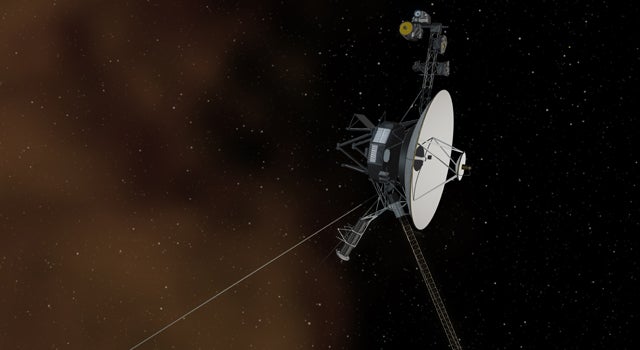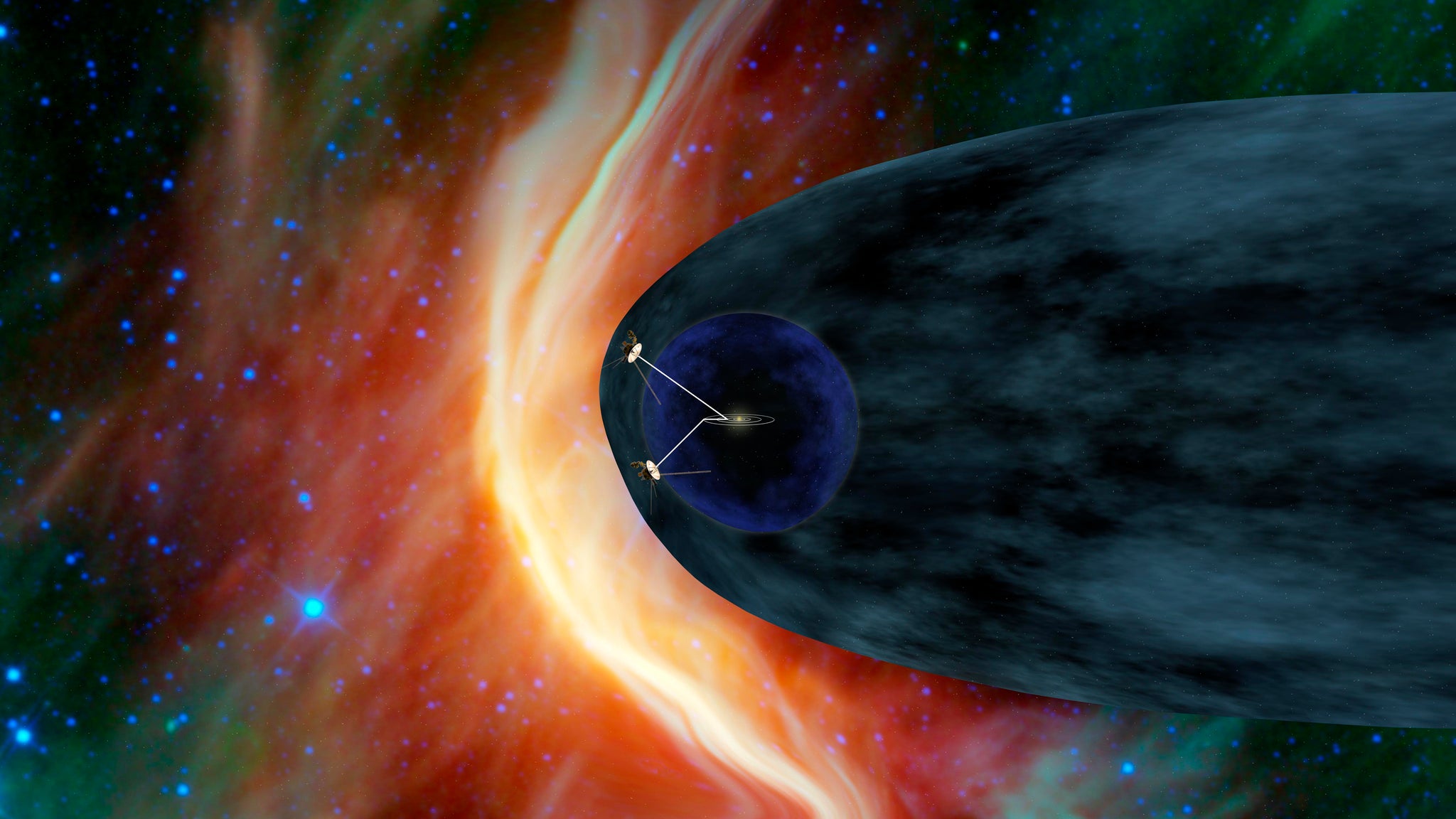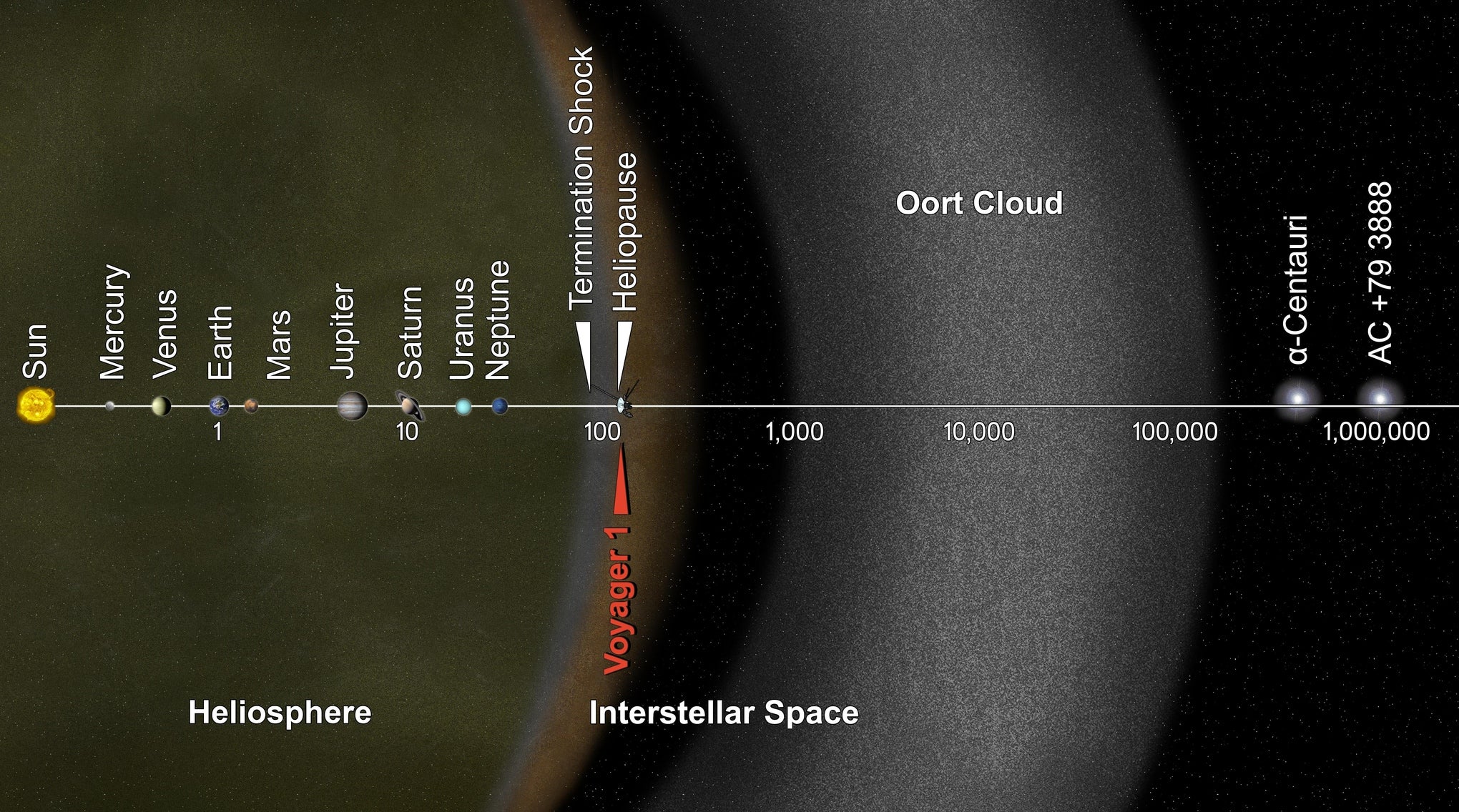Nasa confirms that the Voyager 1 probe has entered interstellar space (again)
The spacecraft has travelled further from Earth than any other man-made object in existence, despite confusion over what constitutes ''interstellar space'

Your support helps us to tell the story
From reproductive rights to climate change to Big Tech, The Independent is on the ground when the story is developing. Whether it's investigating the financials of Elon Musk's pro-Trump PAC or producing our latest documentary, 'The A Word', which shines a light on the American women fighting for reproductive rights, we know how important it is to parse out the facts from the messaging.
At such a critical moment in US history, we need reporters on the ground. Your donation allows us to keep sending journalists to speak to both sides of the story.
The Independent is trusted by Americans across the entire political spectrum. And unlike many other quality news outlets, we choose not to lock Americans out of our reporting and analysis with paywalls. We believe quality journalism should be available to everyone, paid for by those who can afford it.
Your support makes all the difference.After travelling for longer than 36 years and covering a distance of nearly 12 billion miles, the space probe Voyager 1 has finally entered interstellar space, according to a new report from Nasa.
The craft was launched in 1977 as part of a long-term mission to study the solar system, and after conducting flybys of both Jupiter and Saturn was set on a course straight out the solar system carrying images of Earth and a Golden LP with a track list of humanity's greatest hits.
The problem, however, is that Voyager 1 has already entered interstellar space – at least according to some reports, with the probe making headlines last year when scientists declared that it had left the heliosphere back in August 2012.
The heliosphere is the mammoth ‘bubble’ that marks the boundaries of the Sun’s magnetic influence and for many astronomers it’s as good a marker as any for what constitutes the beginning of interstellar space.
Objects within the heliosphere are affected by solar wind (the streams of plasma shot out by the sun) while anything in interstellar space is influenced primarily by the ‘interstellar medium’ – a hotchpotch of matter and energy that includes various forms of gasses, dust and cosmic rays. The uncertain borders between these regions are known as the heliosheath.

As you’d imagine, determining which side of the heliosheath Voyager 1 is on is pretty tricky, something akin to wandering along the Scottish-English border with your eyes closed and trying to work out which country you’re in by tasting the rain.
So what makes scientist so sure this time round? It’s all thanks to a recent tsunami of plasma released by the Sun. These cosmic events - which are expected, if not predictable - create shock waves that ripple through solar system and into the interstellar matter, and leave the Voyager 1 probe bobbing like a buoy after a ship has passed by.
"Normally, interstellar space is like a quiet lake," said Ed Stone of the California Institute of Technology, Voyager 1’s lead scientist since 1972. “But when our sun has a burst, it sends a shock wave outward that reaches Voyager about a year later. The wave causes the plasma surrounding the spacecraft to sing.”
Instruments on Voyager not only register these waves, but also measure quite precisely the oscillations of the surrounding plasma – allowing scientists to work out whether it’s currently in metaphorical deep water or still paddling in the shallows. The latest measurement - the third in a series of recent plasma waves - confirm that Voyager is a long way out.
Stone said: "The tsunami wave rings the plasma like a bell. While the plasma wave instrument lets us measure the frequency of this ringing, the cosmic ray instrument reveals what struck the bell - the shock wave from the sun."

However, despite these measurements Nasa are still hedging their bets somewhat, clarifying that although Voyager 1 has entered interstellar space it’s not yet exited the Solar System – a boundary usually defined by a hypothetical region of outer space known as the Oort cloud.
This is thought to be a spherical cloud of mostly icy debris, small objects that are pleasingly known as 'planetesimals'. If something's still a part of the Oort cloud then it's still in the gravitational grip of the Sun - meaning it's still, technically, a part of the Solar System.
And how long will it be since Voyager 1 gets through this part of space? Current predictions are 300 years to reach the edge of the Oort Cloud and then another 30,000 to exit it. Voyager 1 may have travelled further from Earth than any other man-made object in existence, but to quote sci-fi author Douglas Adams, “that’s just peanuts compared to space.”
Join our commenting forum
Join thought-provoking conversations, follow other Independent readers and see their replies
Comments